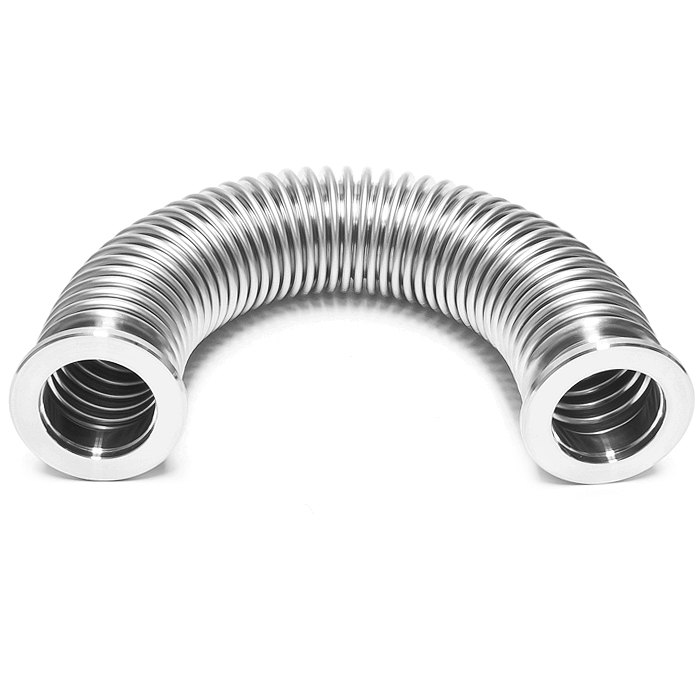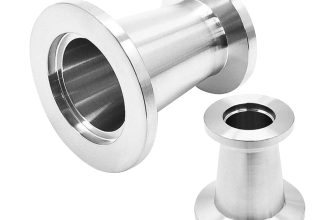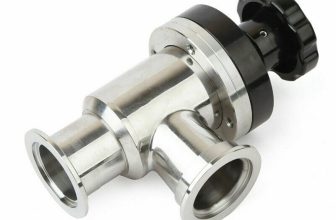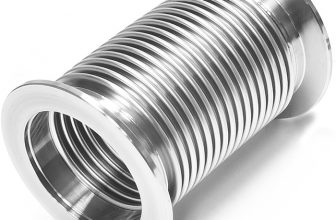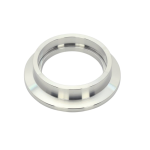
Differences between Three Common Vacuum Flange Specifications (CF, KF, ISO)
Recently, I have always been asked about some vacuum flange structures, such as what is a CF flange? What is a KF flange? What is an ISO flange? The ISO flange is divided into ISO-K and ISO-F. So what is the difference and connection between them? Indeed, these flanges are commonly used flange standards in vacuum system design, and non-professionals are easily confused.
1.CF flange
The English name of CF flange is Conflat Flange. It is a flange connection used in ultra-high vacuum. It is a metal static seal that can withstand high temperature baking.
Nominal diameter sizes include: DN16, 40, 63, 100, 160, 200, 250
The applicable vacuum degree is up to 10-12 mbar.
The flange sealing material is usually Viton, PTFE, oxygen-free copper, etc.
The flange is usually 304, 316 stainless steel, etc., as shown in the figure below:
CF flange
CF flanges are suitable for vacuum standards:
GB / T 6070-2007 vacuum technology flange size
GB / T 6071-2003 ultra high vacuum flange
ISO-KF
ISO-KF is a quick-release flange used in vacuum systems. It consists of the following components: two symmetrically distributed KF flanges, O-Ring, centering bracket, and clamp. No other tools are needed, as long as the disc nut is simply turned by hand, the connection can be loosened or compressed.
ISO-KF vacuum joint is a small size quick-install flange joint. The nominal diameter size includes: DN 10, 16, 25, 40, 50.
Manufacturing standards include: DIN 28403, ISO 2861
Applicable vacuum up to 10-8 mbar.
Flange sealing materials are usually Viton, Buna, Silicone, EPDM, aluminum, etc.
Flanges are usually 304, 316 stainless steel, etc.
ISO-KF vacuum joint is usually composed of flange, clamp, O-Ring, and centering ring, see the figure below.
ISO-KF
ISO-KF applicable vacuum standards:
GB / T 4982-2003 Vacuum technology Quick release connector Dimensions Part 1: Clamping type
GB / T 4983-2003 Vacuum technology Quick release connector Dimensions Part 2: Tightening type
3.ISO flange
ISO flanges and piping can be used in various applications from atmospheric pressure to high vacuum, often assembly and disassembly. Generally the diameter of the pipe is more than 50mm (2 inches). If fluoro rubber O-ring is used, it can withstand 150 ° C baking.
The two commonly used forms of ISO flanges are ISO-K and ISO-F
ISO-K and ISO-F vacuum joints are large vacuum joints with nominal diameters including: DN 63, 100, 160, 200, 250, 320, 400, 500 and 630
Manufacturing standards include: DIN 28404, ISO 1609
Can be used in applications requiring vacuum of up to 10-8 mbar.
Flange sealing materials are usually Viton, Buna, Silicone, EPDM, aluminum wire, etc.
Flanges are usually 304, 316 stainless steel, etc.
- ISO-K vacuum joint is usually composed of flange (flang), flange claw (clamp), seal (O-Ring), centering ring (centering ring).
ISO-K vacuum joint
- ISO-F vacuum joints are usually composed of flange (flang), sealing ring (O-Ring), centering ring (centering ring), different from ISO-K is that the flange is strong with bolts.
ISO-F vacuum joint
ISO flange applies vacuum standards:
JB / T 1090-1991 Type and size of rubber seal for J type vacuum
JB / T 109l-1991 JO type and skeleton type rubber seal ring type and size
JB / T 1092-1991 O-type vacuum rubber seal ring type and size

